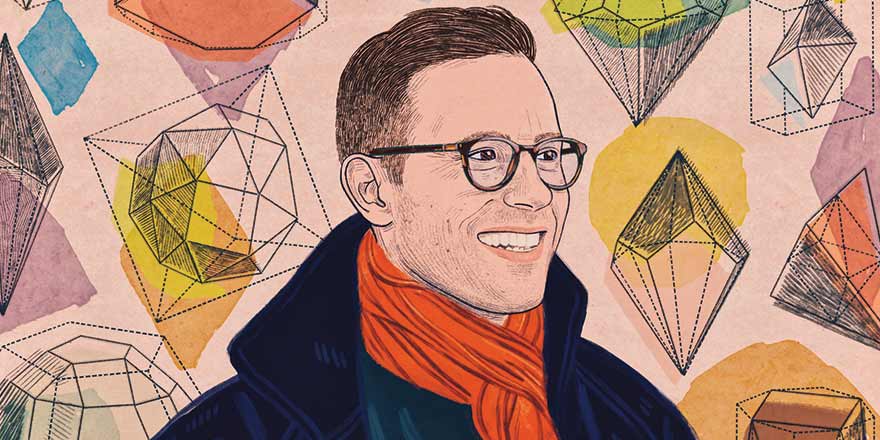
At Sarah Lawrence, students are encouraged to find connections between seemingly disparate disciplines; Philip Ording, whose work focuses on the intersections of mathematics and art, leads by example. He has served as a mathematics consultant to New York City artists since 2003 and, in 2019, published 99 Variations on a Proof—a monograph offering 99 proofs to the same theorem bringing in everything from architecture to sign language to social media to expand how readers think about a seemingly unremarkable equation.
Learning math is difficult. It’s a foreign language but without any of the foreign films or food or cities to enjoy. So, teaching and learning math has to be a shared act of imagination. At least that’s what I want from my seminars. Sarah Lawrence’s model of education makes it a very attractive place to do this. There’s a tradition here that values discussion over lecture, self-directed study over training, and collaboration over competition. I think that’s what drew me here. But I’m also a geometer, so it could have been the circular seminar tables.
It starts as a conversation. If we met for conference, we’d begin with why you want to study math. Is it to apply math to another subject like economics, chemistry, or architecture? Is it the intellectual and emotional rewards of solving precise problems? Not every student has a ready answer, which is fine—math’s hold on me has certainly changed over time. What’s important is that conference work in mathematics advances your mathematical interests. And it communicates the results of that progress to an academic audience—or at least to your seminar instructor and classmates.
I think it’s similar to what inspires some of our students. The first class I taught here was “Discrete Mathematics,” which is a seminar on problems of counting, structure, and logic. One student wanted to know what would happen if you added an extra note to the 12-tone chromatic scale that is basic to Western music. For conference, he made a synthesizer with 13 keys per octave; devised scales, chords, and compositions on it; and wrote a paper describing the give and take between mathematics and music that all this entailed. It was surprising, otherworldly, and just cool.
I think so. What I remember about my favorite teachers is that nothing seemed abstract to them. They could describe an idea the way you’d describe a character in your best-loved movie or book. Not just with numbers, equations and figures, but also with color, metaphor and humor. Working on the 99 Variations gave me practice and a bit more confidence to teach with that kind of agility.
Illustration by Anna Higgie
Teaching and learning math has to be a shared act of imagination.